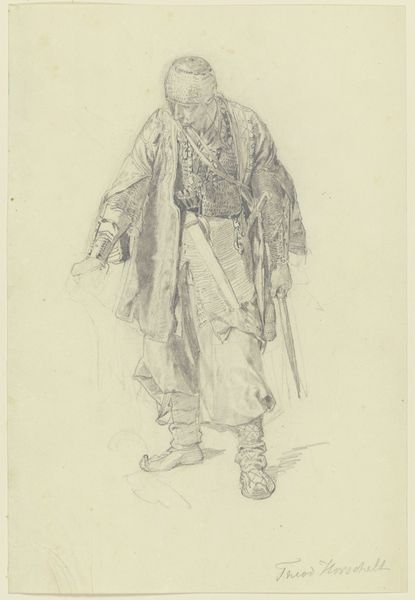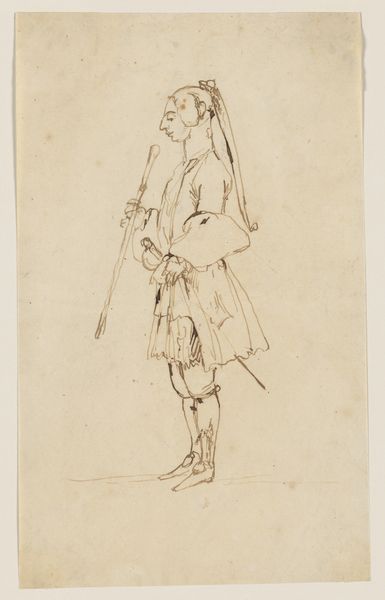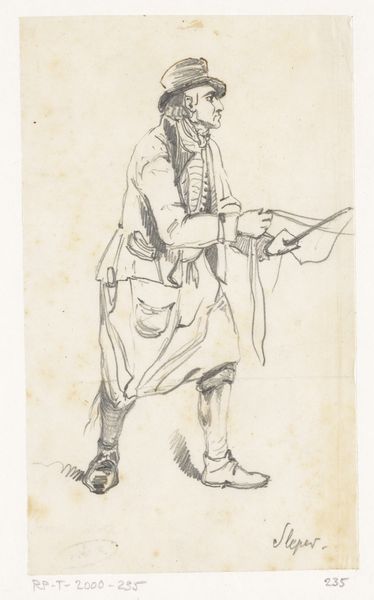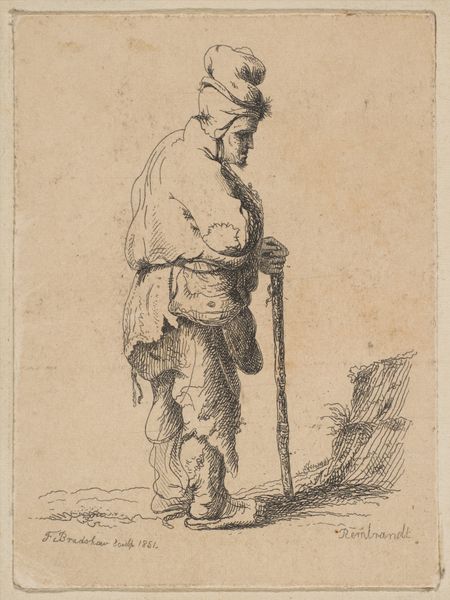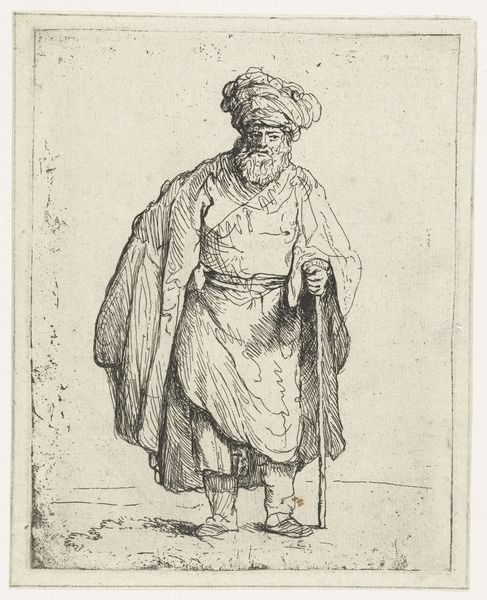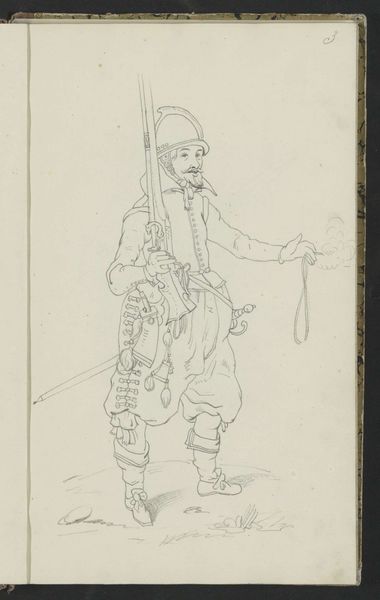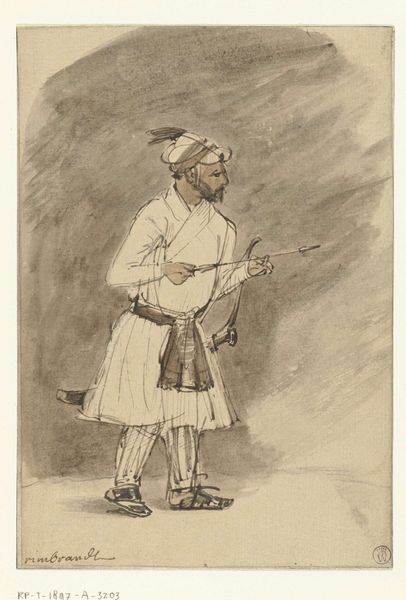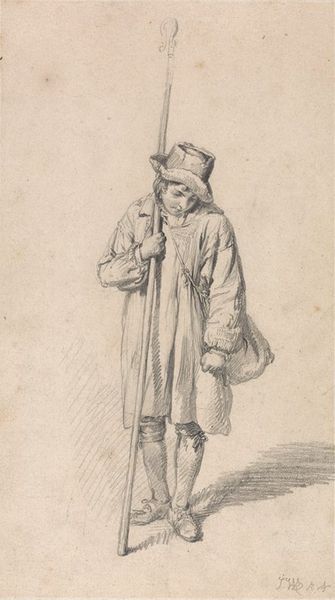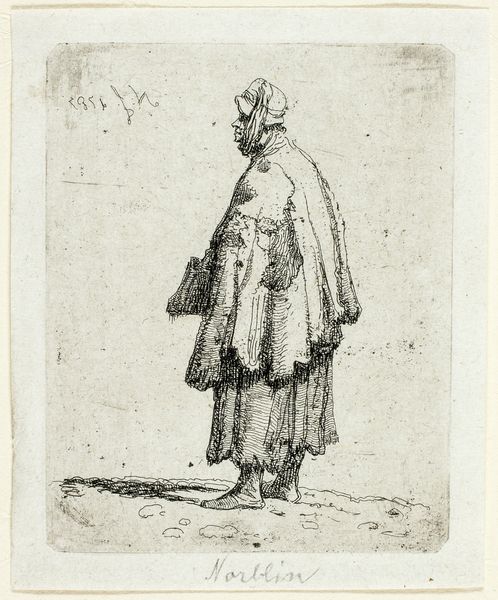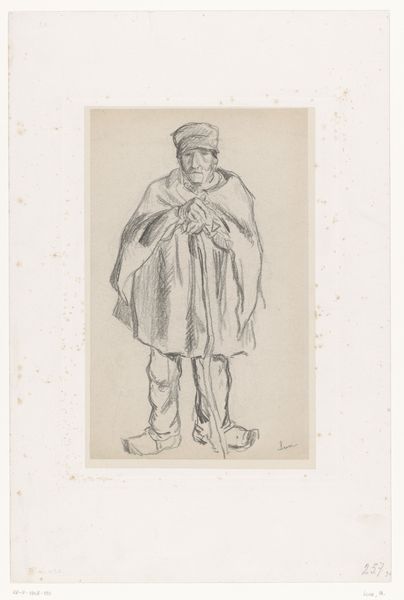
drawing, coloured-pencil, paper, pencil, graphite
#
portrait
#
drawing
#
coloured-pencil
#
figuration
#
paper
#
coloured pencil
#
romanticism
#
pencil
#
line
#
graphite
#
genre-painting
Dimensions: 234 × 159 mm
Copyright: Public Domain
Editor: This is George Chambers' "Dutch Sailor, Carrying an Anchor," created sometime between 1820 and 1830. It's a drawing made with graphite, colored pencil and pencil on paper. It feels quite understated, almost like a quick sketch, yet there's a definite character captured. What do you see in the way the artist has rendered this figure? Curator: The formal elements immediately strike me. Note the stark economy of line; Chambers has managed to convey volume and texture with minimal strokes. Observe how the figure is placed within the frame, neither dominating it nor lost within it, thus creating a spatial tension that is central to the artwork. The choice of colored pencil enhances specific details such as the face, hat and the end of the anchor, drawing our eye to focal points in the narrative structure, almost akin to applying dramatic makeup. Editor: I hadn't really considered the importance of that negative space. Does the flatness of the background emphasize the realism of the figure by contrast? Curator: Indeed. We can appreciate how the contrast between line, colour and surface serves a fundamental purpose. In structuralist terms, Chambers employs these elements almost like linguistic signs that create meaning and allow us to interpret the relation between space and figure. Look, too, at the subtle modelling. How does this formal device serve the composition as a whole? Editor: It guides your eye around the form of the sailor, giving him weight and presence within this minimal space, I guess. I’m starting to appreciate the subtleties of this piece! Curator: Precisely. It’s a testament to how even seemingly simple works can reveal complexity upon deeper structural and semiotic inspection. I’ve come to think about narrative in art quite differently today.
Comments
No comments
Be the first to comment and join the conversation on the ultimate creative platform.
